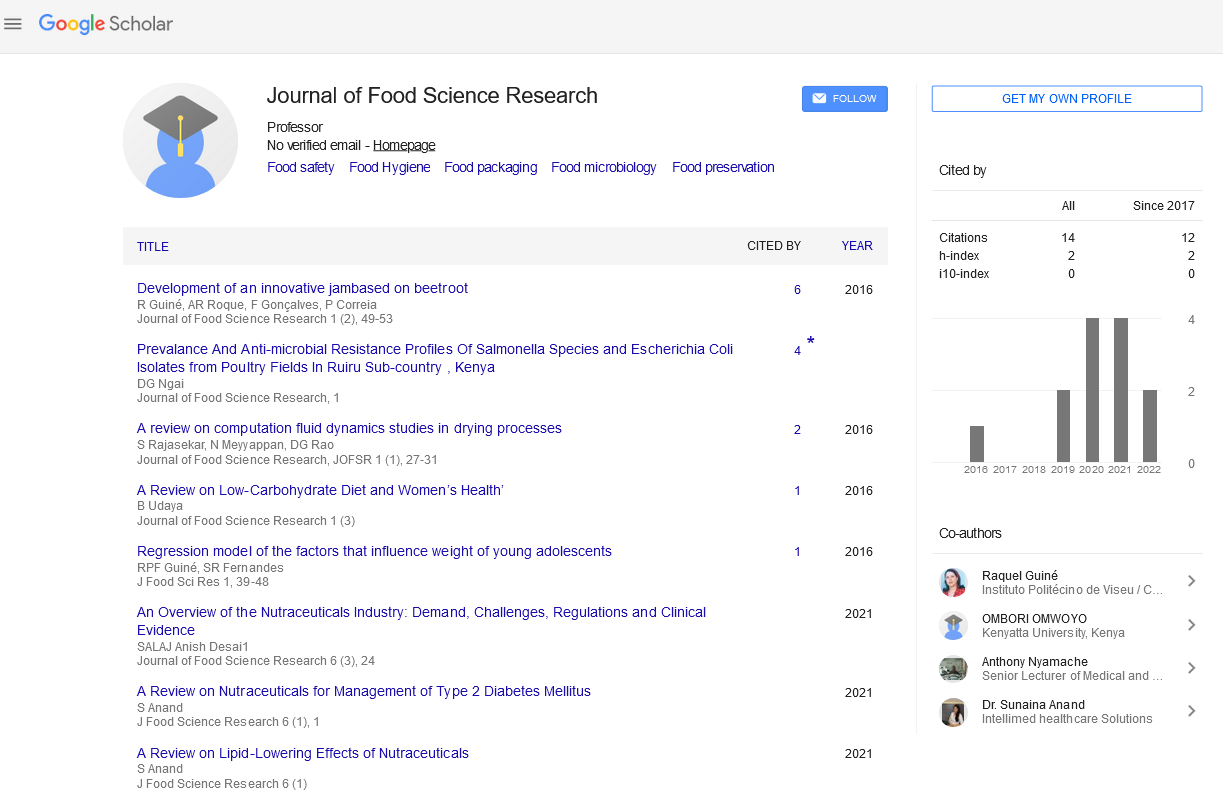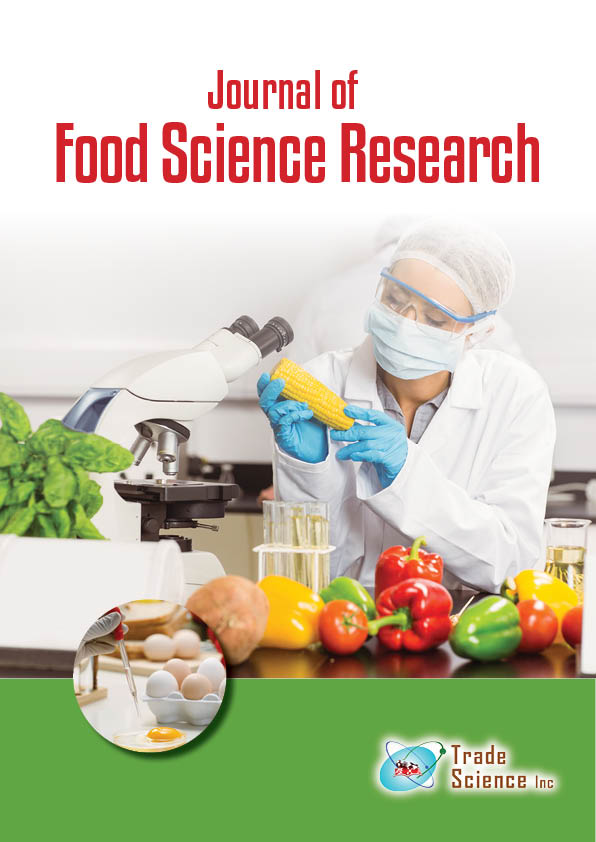Abstract
Microbiological Quality Assessment of Nine Selected Spices in North Greece And Thrace
Author(s): Food safety, Food Hygiene, Food packagingSpices are used all over the world to enhance the flavor of foods. Many spices, like other food substances, may carry some bacteria, yeasts, moulds spores and even some insects making them a potent source for food spoilage and pathogens. To study the microbiological status of herbs and spices a total of 16 samples representing different type of spices (including turmeric, tsimeni, clove and cinnamon) were randomly collected from different market and bazaars in North Greece. Standard microbiological analysis was carried out for the detection and enumeration of microorganisms using standard media. The analysis included; aerobic mesophilic bacterial count, staphylococcal count, fungal count, yeast count, coliform count, detection of E. coli, Salmonella spp, Shigella spp. and Clostridium perfringens. The result of the microbiological analysis of the group of spices that were tested could be considered more than satisfactory showing that the samples had a mean aerobic plate count of <30 cfu / g which is considered negligible. There was only one exception for Turmeric samples obtained from a specific region in North Greece that showed growth in Standard Methods Agar of 2450000 cfu / g. Following further investigation was proven that the specific samples contained Escherichia coli as well as Staphylococcus aureus with growth of 148000 cfu / g. The development of Escherichia coli and Staphylococcus aureus is likely to be due to the non-following guidelines of the codex (CAC/RCP 42 – 1995), which state that the effective measures should be taken to prevent cross-contamination of uncontaminated spices by direct or indirect contact with potentially contaminated material at all stages of the processing

